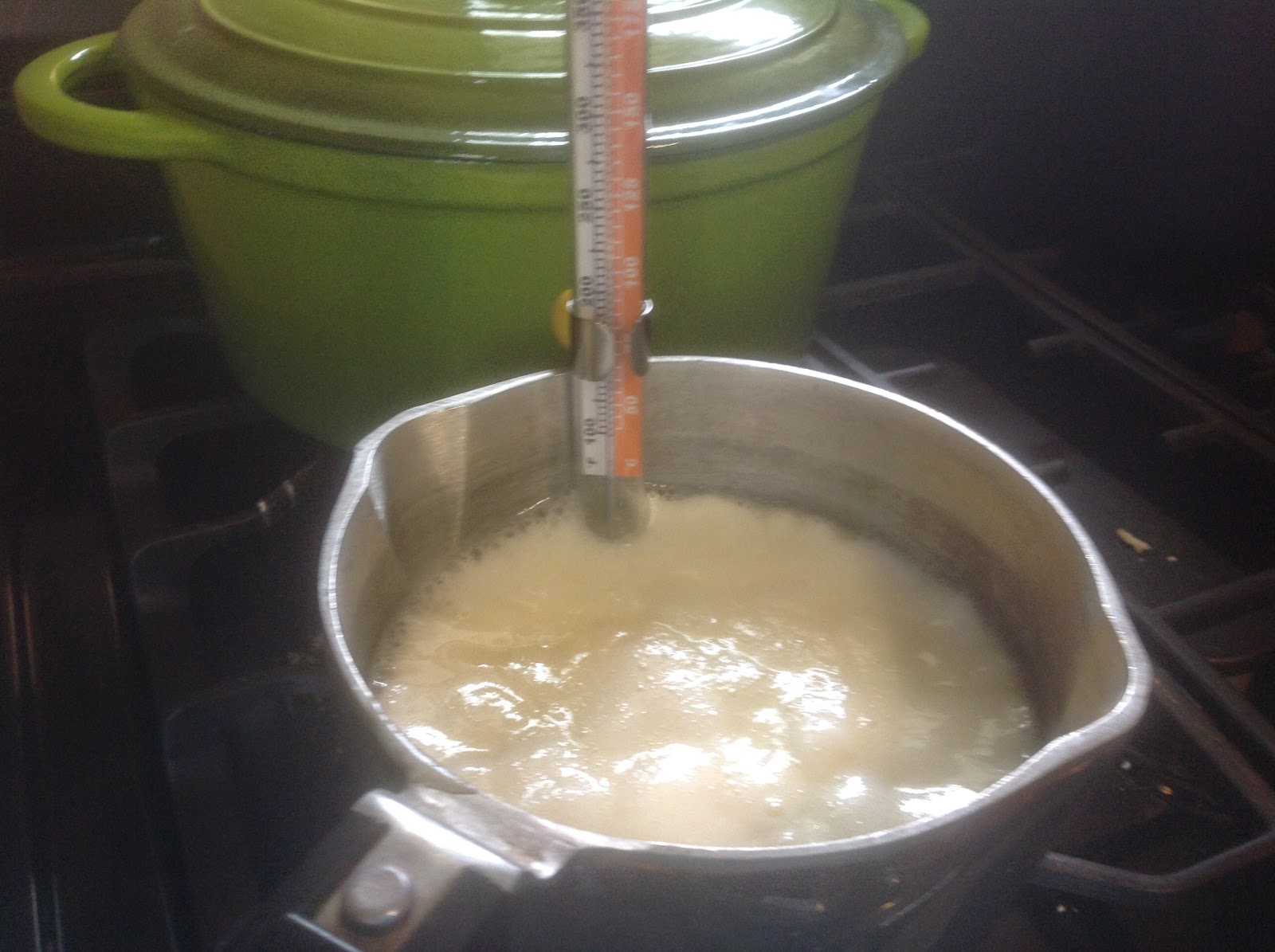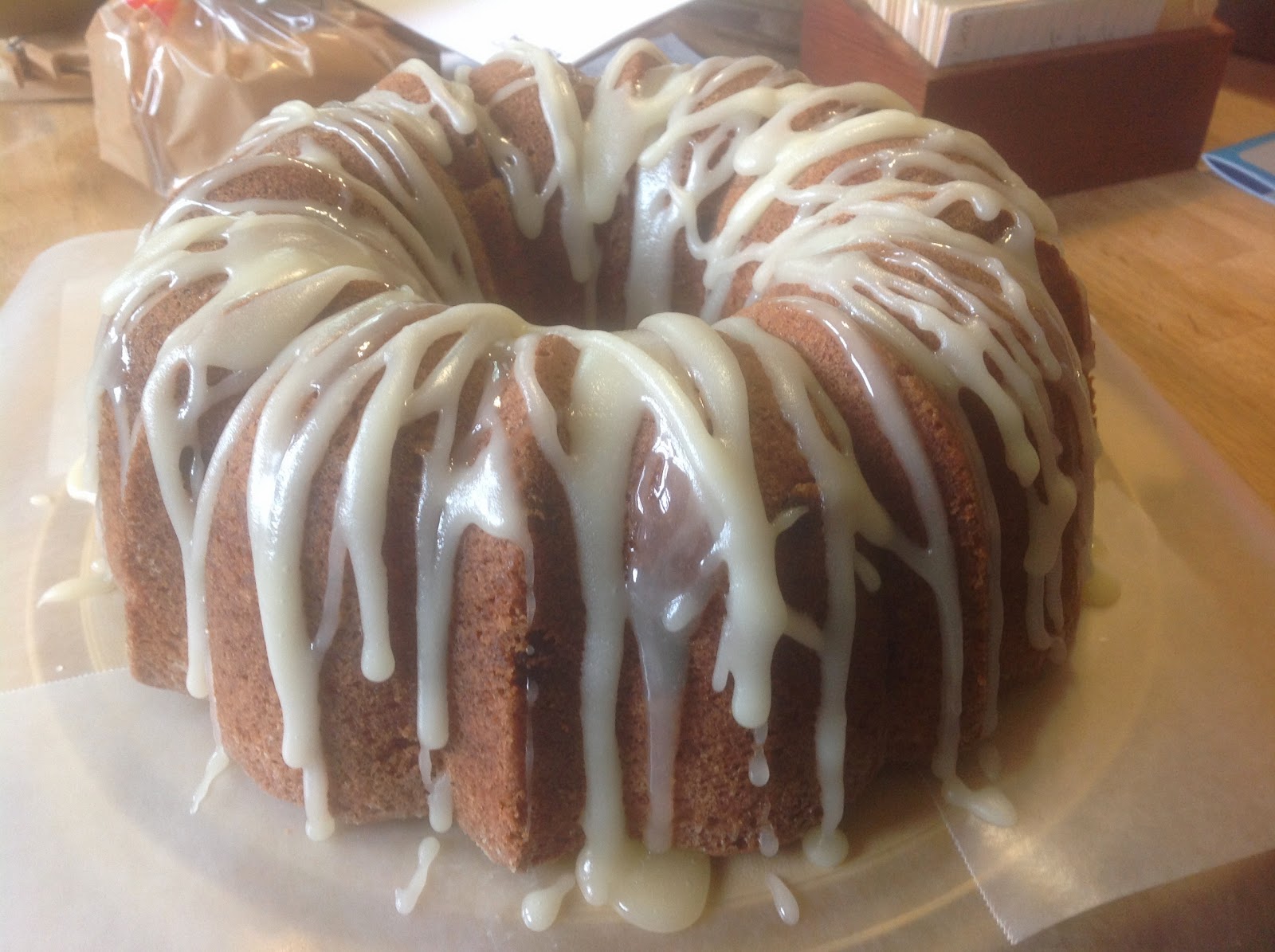 |
| Taste testing at knitting group. |

You've heard about making lemonade when life hands you a lemon? Well, I made applesauce by accident, and I had to figure out what to do with the applesauce. Part of it went into some banana bread, and the rest prompted me to dig into my mother's recipe box for my grandmother Hale's jam cake recipe. Like most of my family recipes, there are no instructions because anyone should know how to make a cake. I figured that sweetened applesauce should be a decent substitute for jam. It turned out pretty good if I do say so myself.
 |
| Well worn cards from my mother's recipe box. |
2 cups sugar
1 cup buttermilk
3 eggs
3 cups flour
1 teaspoon baking soda
1 teaspoon cinnamon
½ teaspoon allspice
¼ teaspoon nutmeg
1 cup jam or applesauce
1 cup raisins
1 cup chopped pecans
Preheat oven to 350°F. Grease and flour three (9 inch) cake pans or
one tube or Bundt cake pan.
Sift together the flour, baking soda, and
spices. Spoon about ¼ cup of this
mixture over the raisins and toss to coat the raisins; set aside. |
| Dredging raisins in flour keeps them from all sinking to the bottom of the batter. |
Cream softened butter and sugar until the mixture is
light and airy.
Add eggs one at a time, mixing thoroughly.
Add flour and
buttermilk alternately, ending with flour, blending ingredients very well. Stir in the raisins, pecans, and jam or
applesauce. Mix well.
Pour into cake pans and bake until a
toothpick or tester inserted in the center of the cake comes out clean; the crust
should be nicely browned. For a tube
cake, it takes 1 hour and 10 minutes in my oven. Cool thoroughly before adding frosting.
Icing:
½ cup butter |
| Creamed butter and sugar mixture. |
Add eggs one at a time, mixing thoroughly.
 |
| Add flour and buttermilk alternately, mixing well but not over beating. |
 |
| Batter will be very thick with raisins, nuts, and jam or applesauce. |
 |
| Golden brown crust, yummy! |
 |
| Ready to bake. |
 |
| Cooled and ready for the icing. |
Icing:
1 cup cream
2 cups sugar
Place ingredients in a heavy 2 quart saucepan. 2 cups sugar
Bring to a boil and boil without stirring until the mixture reaches 235°F-245°F, or forms a soft ball when dropped in cold water. Remove from heat and beat until cooled.
 |
| Half batch for Bundt cake, using a smaller saucepan. |
Frost cake layers, working quickly. If making a tube or Bundt cake, make only half a recipe of icing and drizzle on the cake.
 |
| Place sheets of waxed paper beneath cake to catch drips, then remove after adding icing. |
 |
| A wise friend of mine, who is also a good bake show judge, says you don't have to use all the icing. Use just enough. |
 |
| Eating the leftover icing from the pan was the best part when I was a child! |










